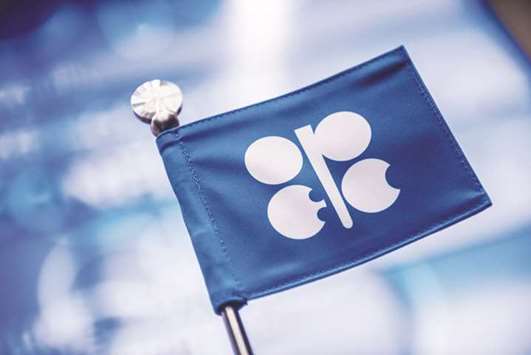Opec wants an “orderly recovery” in oil production from Libya, Nigeria and Iran and has a flexible output target under its cuts agreement to accommodate more crude from the three member nations, the group’s secretary-general Mohammad Barkindo said.
The Organisation of Petroleum Exporting Countries was anticipating a revival in production from the three when it set a targeted output range from 32.5mn bpd to 33mn bpd under its November agreement, Barkindo told Bloomberg Television last week at a conference in Istanbul. Nigeria will support a cap on its production, the country’s Minister of State for Petroleum Resources Emmanuel Kachikwu told reporters in the capital Abuja.
“What we would like to see is an orderly recovery that would not disrupt significantly the re-balancing of the market, which is a very delicate process which has taken longer than expected because of the change in fundamentals,” Barkindo said. By setting a range for the production ceiling, Opec was “making provisions for the expected recovery of production” from Libya, Nigeria and Iran, he said.
Opec decided in November to reduce its output by 1.2mn bpd to 32.5mn starting January 1 to clear a global glut. Other producers including Russia joined the deal, which was extended through March 2018.
Libya and Nigeria were both exempted from the cuts due to their internal strife, while Iran was allowed to raise production by 90,000 bpd as it was recovering from sanctions. Crude slid into a bear market last month amid concerns that cutbacks by Opec and allied producers are being partially offset by a rebound in supply from Libya and Nigeria and by US shale output. Benchmark Brent crude has dropped 17% this year.
Opec pumped 32.6mn bpd in June, and its output exceeded demand in the first half of this year, according to a report the group issued last Wednesday. Compliance with the curbs needed to clear a global inventory surplus has faltered to its lowest level since they began in January, the International Energy Agency said on Thursday.
“Dramatic improvement” in output from Libya and Nigeria diluted Opec’s actual supply cut of 920,000 bpd in June, almost halving it to 470,000, the IEA said in a report. If Libya can sustain current production of about 1mn bpd, Nigeria builds on recent gains and the rest of Opec holds output steady, then the group’s cuts could be eroded in July to less than 300,000 bpd, the Paris-based agency said.
Libya and Nigeria may be asked to cap their output soon in an effort to help re-balance the market, Kuwaiti Oil Minister Issam Almarzooq said on July 10. Both African nations are expected to send representatives to the next meeting of the Opec and non-Opec Joint Technical Committee on July 22 in Russia, Barkindo said.
Opec recognises that Libya, Nigeria, and Iran have faced “severe challenges,” and it welcomes their increased production, he said. “We are glad these countries are recovering fast.”
Nigeria’s output limit would come into play when the nation can pump at a stable rate of 1.8mn bpd, about 100,000 more than it’s currently producing, Kachikwu said. “We still are below the 1.8mn bpd benchmark set for us by Opec,” he said. “I think that over the next one or two months, hopefully, we can get to that point where we can say the recovery has been tested, it is systemic and predictable.”
Nigeria will miss an Opec ministerial committee meeting in Russia scheduled for July 24, but Kachikwu plans to meet with Saudi Arabia and Russia after that, he said.
Libya’s output has risen to 1.05mn bpd, or 45,000 bpd more than the country was pumping at the beginning of July, according to a person with direct knowledge of the matter who asked not to be identified for lack of authorisation to speak to the media. The nation’s output is at the highest level since June 2013, according to data compiled by Bloomberg. The global cuts accord between Opec and non-Opec producers faced “headwinds” in the first quarter this year and didn’t cause crude stockpiles to decline fast enough, Barkindo said. The current market downturn is lasting longer than previous slumps, due largely to 700,000 bpd to 800,000 bpd of additional supply from the US, he said.

An Opec branded flag sits on a table ahead of its meeting in Vienna, Austria (file). Opec and allied producers are being partially offset by a rebound in supply from Libya and Nigeria and by US shale output.


